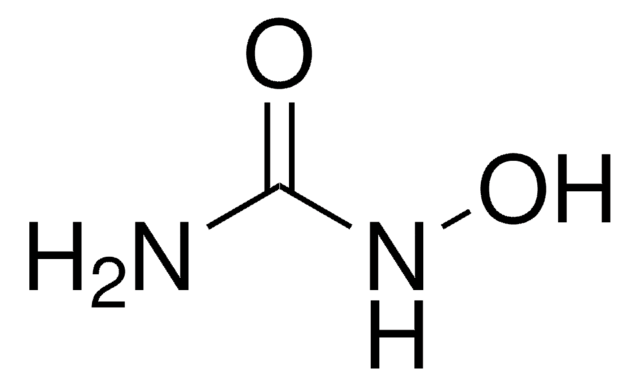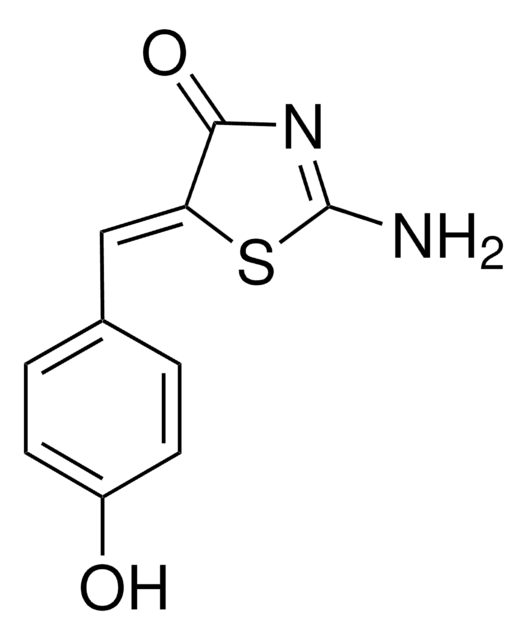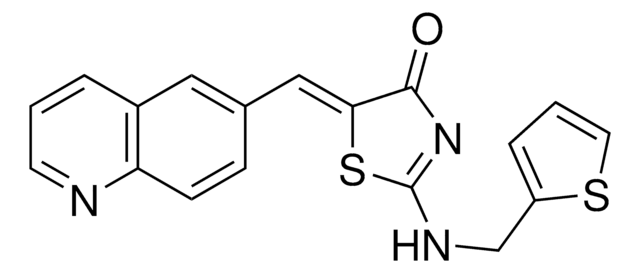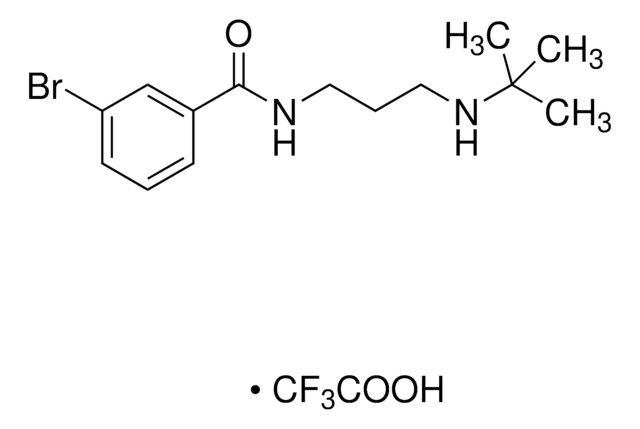H8627
Hydroxyurea
98% (elemental analysis), powder, RNR inhibitor
Synonym(s):
Hydroxycarbamide
About This Item
Recommended Products
Product Name
Hydroxyurea, 98%, powder
Quality Level
assay
98%
form
powder
color
white
solubility
H2O: 50 mg/mL
storage temp.
2-8°C
SMILES string
NC(=O)NO
InChI
1S/CH4N2O2/c2-1(4)3-5/h5H,(H3,2,3,4)
InChI key
VSNHCAURESNICA-UHFFFAOYSA-N
Gene Information
human ... CA1(759) , CA2(760) , CYP1A2(1544) , RRM1(6240) , RRM2(6241) , RRM2B(50484)
Looking for similar products? Visit Product Comparison Guide
General description
Application
- for cell cycle synchronization in MCF-7 human breast carcinoma cells, Schizosaccharomyces pombe, primary root of seedling
- as a drug for treating the parasite Leishmania mexicana in cell viability and cell cycle assay
- as an inhibitor in the cell adhesion and motility assay in Caki control and CD9 knockdown cells
Biochem/physiol Actions
Features and Benefits
signalword
Danger
hcodes
pcodes
Hazard Classifications
Muta. 1B - Repr. 2
Storage Class
6.1C - Combustible acute toxic Cat.3 / toxic compounds or compounds which causing chronic effects
wgk_germany
WGK 3
flash_point_f
Not applicable
flash_point_c
Not applicable
ppe
Eyeshields, Gloves, type P3 (EN 143) respirator cartridges
Choose from one of the most recent versions:
Already Own This Product?
Find documentation for the products that you have recently purchased in the Document Library.
Customers Also Viewed
Related Content
Apoptosis, or programmed cell death (PCD), is a selective process for the removal of unnecessary, infected or transformed cells in various biological systems. As it plays a role in the homeostasis of multicellular organisms, apoptosis is tightly regulated through two principal pathways by a number of regulatory and effector molecules.
n proliferating cells, the cell cycle consists of four phases. Gap 1 (G1) is the interval between mitosis and DNA replication that is characterized by cell growth. Replication of DNA occurs during the synthesis (S) phase, which is followed by a second gap phase (G2) during which growth and preparation for cell division occurs. Together, these three stages comprise the interphase phase of the cell cycle. Interphase is followed by the mitotic (M) phase.
Our team of scientists has experience in all areas of research including Life Science, Material Science, Chemical Synthesis, Chromatography, Analytical and many others.
Contact Technical Service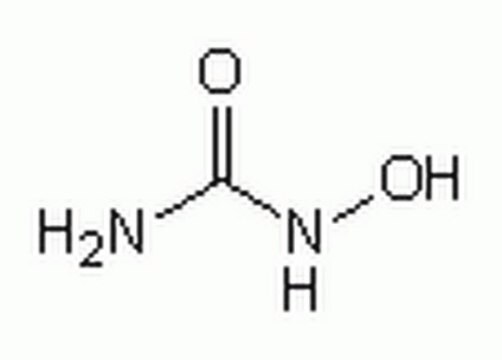

![[Glu1]-Fibrinopeptide B human ≥90% (HPLC)](/deepweb/assets/sigmaaldrich/product/structures/122/537/7ead5c32-cb67-4325-9ce7-66c8dec24bdd/640/7ead5c32-cb67-4325-9ce7-66c8dec24bdd.png)

